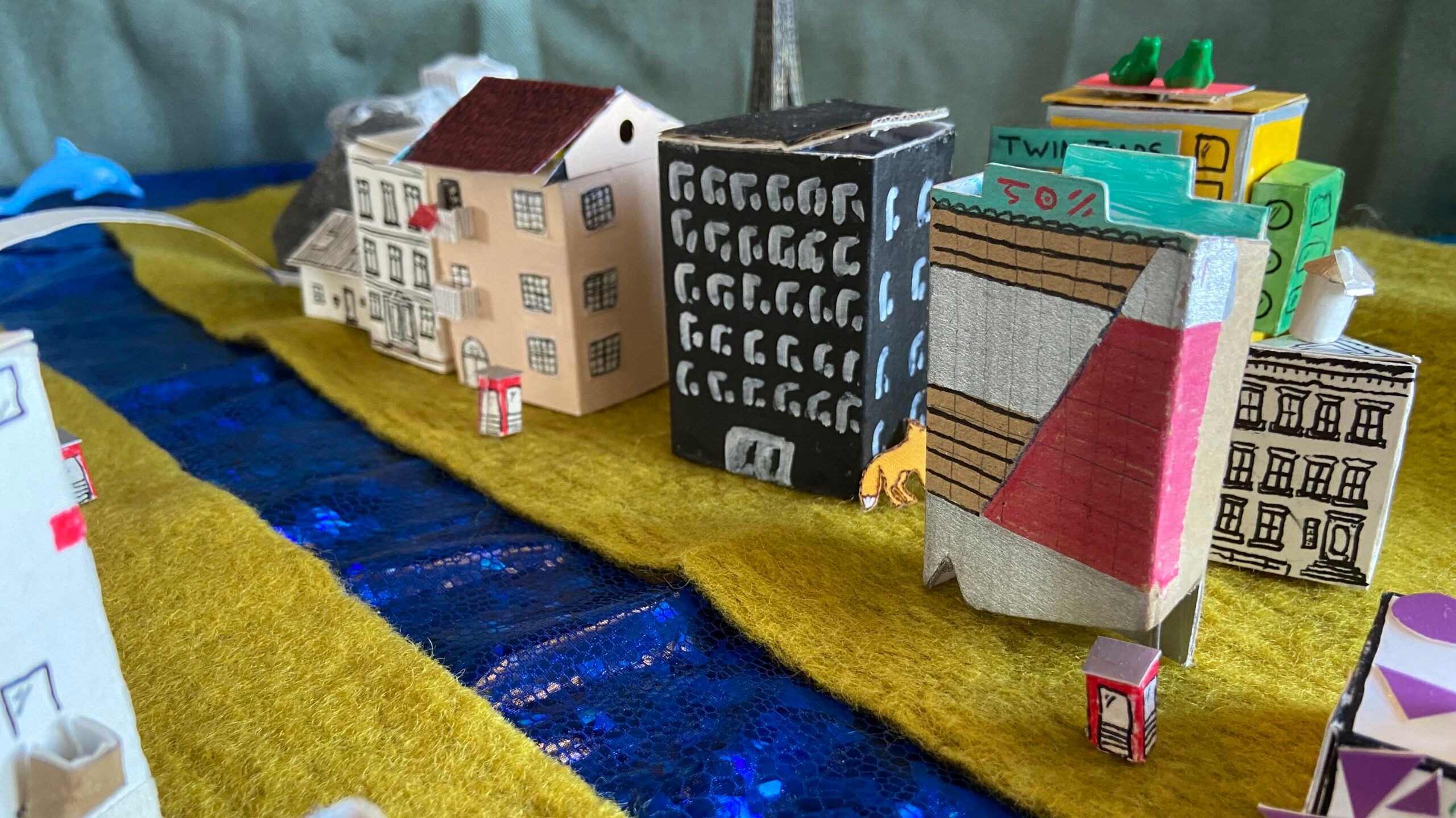Story City #

#StoryCity is an online collaborative craft project where a mosaic-like picture of a city comes together when families all over the world create the buildings and stories that make up the city.
The inspiration for the project came in the early days of the COVID-19 pandemic as children all over the world were suddenly confined to their homes. Through #StoryCity, children could play together by building a shared imagined world while staying socially-distanced at home.
The activity was used in several campaigns by the LEGO Foundation encouraging positive parent-child play during the COVID-19 lockdowns. It was also picked up and remixed by others including the Boys & Girls Club, Wonderful Idea Co., Makey Makey, Strawbees, PlayGround Camp, LEGO Virtual Play Day, and others.
Background #
Three days into the COVID-19 lockdown I was discussing ideas with colleagues for how to promote creative play to parents stuck at home. The first idea I landed on was a broad concept; a hashtag that would facilitate parents to document and share their children's creative work as it developed - with the aim of illustrating (to parents) how the evolving goals of their children's projects can lead to meaningful learning experiences. In short, to promote the tinkering approach to learning as apposed to the planning approach.[1] This idea never made it past the concept phase, but it did, appropriately, evolve into something else: #StoryCity.
This tweet got a pretty positive response, so I wrote a post on the LEGO Foundation blog to promote the project and guide parents in facilitating the activity as a child-directed way to play together. Here's an excerpt:
"...You know your kids better than anyone, but consider your level of involvement in directing the play. The more your kids take ownership of the project, the more they’ll get out of the experience of building it. That said, your kids might need a higher level of guidance to get started...."
https://twitter.com/nilsenmuseum/status/1239941806852321282
After a few days, the #StoryCity hashtag started filling up with posts from all over the world. But the hashtag search function on Twitter wasn't the ideal user interface, so I teamed up with the Playful Learning Lab and together we made the website StoryCity.Land. The new website's aim was to improve readability, collect content from more sources, and host educator guides. As of jan 2021 the Playful Learning Lab still maintains the site.
Here are some of my favorite stories from #StoryCity #
https://twitter.com/pickupfindout/status/1247784950511763458
https://twitter.com/MrReuland/status/1297258168435736578
https://twitter.com/lesa\_wang/status/1259464223924551681
https://twitter.com/peacefulpendant/status/1258071829236809728
https://twitter.com/thinksci/status/1240753418035032064
https://twitter.com/ryanejenkins/status/1290437114501496834

https://twitter.com/anantiq/status/1256539513792401409
https://twitter.com/MaKeyLindsay/status/1286414468436688898
https://twitter.com/MrsVanSTEaM/status/1266146556497068032
https://twitter.com/MaKeyLindsay/status/1293524000942030849
I'm a better talker than I am a writer, so ask me about this in person and I'll be very happy to expand on what's written here.
Notes #
Resnick, M., & Rosenbaum, E. (2013). Designing for Tinkerability. In M. Honey & D.E. Hunter (Eds.) Design, make, play pp. 164
Many people think of tinkering in opposition to planning—and they often view planning as an inherently superior approach. Planning seems more organized, more direct, more efficient. Planners survey a situation, identify problems and needs, develop a clear plan, then execute it. Do it once and do it right. What could be better than that? ↩︎